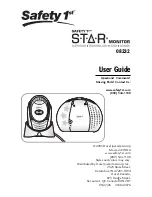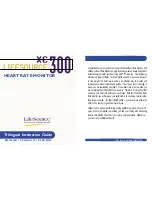
CHAPTER 4
OPERATION
4-5
DT-203P, DT-105P and DT-110P display series
4.5
Inputs characteristics.
- D0 Data inputs. Bit 1
- D1 Data inputs. Bit 2
- D2 Data inputs. Bit 4
- D3 Data inputs. Bit 8
- D4 Data inputs. Bit 16
- D5 Data inputs. Bit 32
- D6 Data inputs. Bit 64
- D7 Data inputs. Bit 128
- D8 Data inputs. Bit 256
- CT1-CT2 Select specific functions.
- SM Strobe Messages. Impulse (10ms) activated or deactivated a message.
- SV Strobe Variables. Impulse (10ms), variable validate.
- SR Set/Reset. Auxiliary signal for activated or deactivated.
4.6
How to send messages to the display
There are three ways to send a message once the displayed is programmed:
- Displaying only one message
- Displaying all messages in EEPROM
The number of lines of a message has nothing to do with the way a message is sent
because the corresponding lines and texts are defined by the message edited in
TED program.
All the following specifications have nothing to do with the number of lines of the display
4.7
General specifications for working with the variables.
To display variables, there are some conditions to consider:
-The variables characters have to be previously programmed from TED program to the
message.
- The message has to be activated and it has to be the last activated. When a message is not
the last one activated, it has to be activated again. The fact of activating one message which has been
previously activated does not display this message two times.
- The internal position counter of the variables has to be loaded with (0-15) value, which says
the position of the variable.
This method allows modifying a variable value or group of variables value without changing
the other variables. Every time a variable character is sent, the position counter increases
automatically to the following position. The variable direction of every character can be sent although it
is easier to load the direction value of the first variable and to let the counter increase the directions by
itself.








































